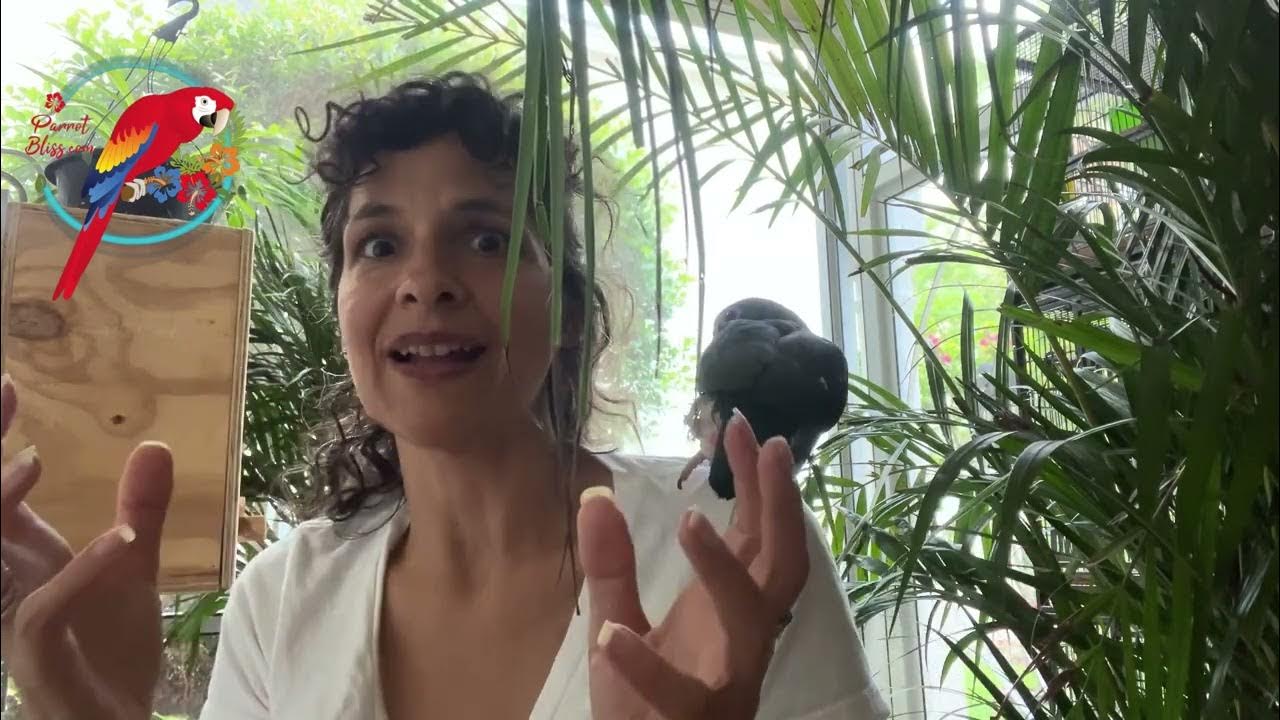Polar Blue Parrot Cichlid | My Experience Keeping
Summary
TLDRIn this video, Connor shares his experience keeping the polar blue parrot cichlid, a relatively new hybrid fish. He discusses their growth, size, and aggression, emphasizing the inaccuracies found in online profiles compared to his observations. Connor recommends a minimum tank size of 20 gallons for a pair and notes their semi-aggressive nature, especially towards smaller fish. He highlights their dietary needs, suggesting a varied diet that includes sinking pellets and frozen treats. Overall, Connor praises the fish for their vibrant colors and personality, making them a great addition to a cichlid tank while cautioning potential owners about their compatibility with other species.
Takeaways
- 🐟 The polar blue parrot cichlid is a relatively new hybrid fish with limited information available online.
- 📈 Growth of polar blue parrots is often misrepresented; they typically reach around 3-4 inches, not the 8 inches stated in some profiles.
- 🏠 A minimum tank size of 20 gallons is recommended for a pair of polar blue parrots, with 29 gallons being ideal for a community setup.
- ⚔️ Polar blue parrots tend to be more aggressive than blood parrots, especially towards smaller or peaceful fish.
- 👥 It's advisable to keep polar blue parrots with other semi-aggressive cichlids rather than community fish like tetras or livebearers.
- 🍽️ A varied omnivorous diet is essential for polar blue parrots, including sinking cichlid pellets, blood worms, and flakes.
- 💧 Water parameters should ideally be a pH of 6.5 to 8.0, temperature between 72-80°F, and general hardness of 2 to 25 degrees.
- 🤝 Compatibility improves over time; initial aggression towards tank mates often decreases as the fish mature.
- 🐠 Polar blue parrots exhibit vibrant colors and interesting behaviors, making them visually appealing and engaging.
- 💬 Viewers are encouraged to share their experiences with polar blue parrots or ask questions in the comments.
Q & A
What is the polar blue parrot cichlid?
-The polar blue parrot cichlid is a relatively new hybrid fish, recognized for its unique appearance and behavior.
How do the growth and size of polar blue parrots compare to blood parrots?
-Polar blue parrots generally grow to about 3 to 4 inches, which is smaller than the blood parrots that can reach up to 8 inches.
What tank size is recommended for keeping polar blue parrots?
-A minimum of 20 gallons is recommended for a pair of polar blue parrots, with 29 gallons being preferable for a more comfortable environment.
How aggressive are polar blue parrots compared to other fish?
-Polar blue parrots are considered semi-aggressive, more aggressive than blood parrots, and can show aggressive behavior towards smaller or peaceful fish.
What types of fish can polar blue parrots coexist with?
-They can coexist with other robust cichlids and semi-aggressive fish but may harass smaller, more peaceful fish like tetras and livebearers.
What is the recommended diet for polar blue parrots?
-Polar blue parrots thrive on a varied omnivore diet that includes cichlid pellets, bloodworms, and flake foods, promoting good color and health.
What water parameters are suitable for polar blue parrots?
-They prefer a pH of 6.5 to 8.0, a temperature range of 72 to 80°F, and a general hardness of 2 to 25 degrees.
How do polar blue parrots behave in terms of tank interaction?
-They are very active, often swimming around and interacting with other fish in the tank, displaying a lively personality.
What considerations should be taken into account before getting polar blue parrots?
-Consider their aggression towards smaller fish and ensure that they are kept in a suitable tank environment, ideally with robust cichlids.
What personal experience does the speaker share about keeping polar blue parrots?
-The speaker shares positive experiences regarding their growth, appearance, and interaction with other fish, noting their impressive coloration and active behavior.
Outlines

Dieser Bereich ist nur für Premium-Benutzer verfügbar. Bitte führen Sie ein Upgrade durch, um auf diesen Abschnitt zuzugreifen.
Upgrade durchführenMindmap

Dieser Bereich ist nur für Premium-Benutzer verfügbar. Bitte führen Sie ein Upgrade durch, um auf diesen Abschnitt zuzugreifen.
Upgrade durchführenKeywords

Dieser Bereich ist nur für Premium-Benutzer verfügbar. Bitte führen Sie ein Upgrade durch, um auf diesen Abschnitt zuzugreifen.
Upgrade durchführenHighlights

Dieser Bereich ist nur für Premium-Benutzer verfügbar. Bitte führen Sie ein Upgrade durch, um auf diesen Abschnitt zuzugreifen.
Upgrade durchführenTranscripts

Dieser Bereich ist nur für Premium-Benutzer verfügbar. Bitte führen Sie ein Upgrade durch, um auf diesen Abschnitt zuzugreifen.
Upgrade durchführenWeitere ähnliche Videos ansehen

Is There a Medium-sized 🦜 Parrot That’s Got All That? #parrot_bliss #parrot

hi.

8 REASONS WHY 2026 TOYOTA RAV4 IS BETTER THAN 2025 RAV4 / DAVID IS IN TOYOTA CITY IN JAPAN TO REPORT

A Fish In This Lake Evolved Into 850 Different Species

RGK Tiga Wheelchair + Attitude Handbikes | Some things are meant to be together

Sukses Budidaya Ikan Hias di Lahan Sempit
5.0 / 5 (0 votes)
